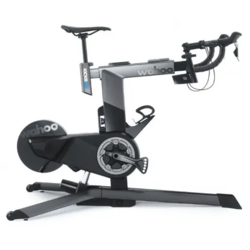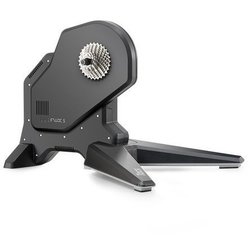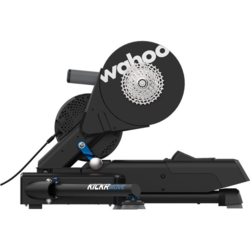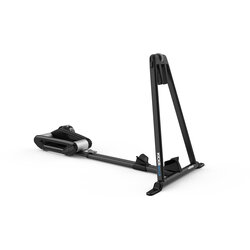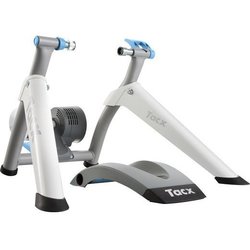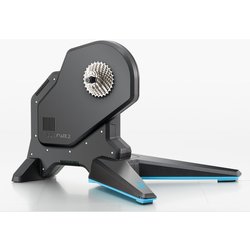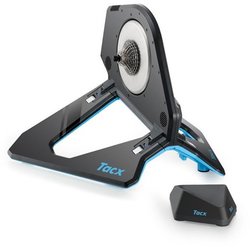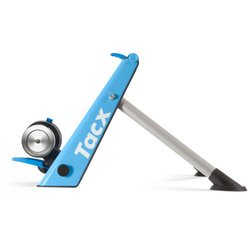Indoor Ride Guide
The days are short, and the weather can get gross, but that doesn’t need to get in the way of your fitness gains and cycling goals. A combination of indoor riding and the right outdoor gear can have you crushing your friends, nemeses, or most despised climb this spring.
In this article we will cover:
- The benefits of riding inside
- Selecting a trainer
- Apps and entertainment for indoor riding
- Creating an effective indoor environment
The Benefits of Indoor Riding
Most people loathe riding inside, but the ones who tolerate it are usually strong riders. That is because indoor training is incredibly efficient, and it allows you to be precise in your training.
Indoor riding saves time: When riding the trainer, you are pedaling 100% of the time. There is no coasting, no stopping at lights, no waiting for your friends. Depending on your workout and local terrain, an hour on the trainer could be worth as much as 90 minutes or more outside.
Indoor riding enables precise and efficient workouts: Training is most effective when it is structured and planned to spend the right amount of time in the right training zones. This can be challenging to accomplish outside due to terrain and traffic. Structuring your indoor workouts allows them to be even more efficient.
Indoor riding is safe: Riding outside always has its inherent risks, but winter adds another layer of risks such as darkness, ice, snow, and frost bite. And that’s just for you--the components of your bike need to contend with corrosive road salt and other weather treatments like sand and gravel.
Selecting a Trainer
The biggest questions when it comes to trainers is usually basic trainer or smart trainer, and then wheel-on or wheel-off. There are also rollers, exercise bikes, and more options to choose from. We will walk through some of the most common questions to help you pick an indoor trainer.
Smart Trainer or Basic Trainer: Smart trainers connect to your phone, computer, or cycling computer to provide you with power data (how much power you are putting into your pedaling), to control resistance, and to interact with training apps. Basic trainers just hold your bike in place while you ride, and often offer only basic resistance methods that do not provide the highest quality ride feel. You cannot use programs like Zwift (described below) with a basic trainer. An entry-level wheel-on smart trainer will cost about $100-$200 more than a basic trainer. For this amount, you get a high-quality fluid trainer, a power meter, and the ability to connect to other devices. This gives you improved ride quality and better training data to help you better enjoy your indoor rides and get stronger in the process.
Wheel-on Trainers: With a wheel-on trainer, you place your entire bike in the trainer with the back wheel still on the bike. You will likely need to switch out your rear axle or quick release skewer with one that fits in your trainer, which is an easy swap. These trainers are typically the least expensive and come in both basic and smart models. However, they put a significant amount of wear on your rear tire and extra stress on your rear wheel. Plan to buy either a dedicated trainer tire, or to replace your tire at the end of trainer season.
Pros:
- Least expensive type of trainer
- Easy to move and travel
Cons:
- Increased wear on your rear tire
- Increased strain on the rear wheel
- Not compatible with all bikes
- Spinning wheel can be a danger for small kids and pets
- Can be loud, especially with tires that have any amount of tread
Direct Drive Trainers: With a direct drive trainer, you remove your rear wheel and place your bike directly on the trainer—the trainer replaces your rear wheel. These trainers are heavy and stable and provide a more realistic ride feel compared to wheel-on trainers. A realistic ride feel will make your indoor rides more enjoyable, encouraging you to ride more. Direct drive trainers are typically smart trainers, and they provide more accurate power numbers compared to wheel-on smart trainers. They are also quieter than any other type of trainers. The only sound you should hear is the sound of your drivetrain—which should not be loud. If it is loud, your bike needs a tune up.
Pros:
- Realistic ride feel
- Accurate power numbers
- Stable
- Quiet
Cons:
- More expensive
- Usually very heavy
If you can afford a little extra money upfront, a direct drive trainer is going to create a more enjoyable indoor riding experience with less wear and tear on your bike.
Indoor Bikes: Indoor bikes are becoming increasingly popular and even finding their way into previously non-cycling households. If you have a year-round dedicated space, this can be a great option. All members of your household can easily adjust and use the same indoor bike, which could be good or bad depending on your point of view. Bikes like the Wahoo Kickr are designed so you can exactly match the set-up of your normal bike. Lower-priced options may lack this adjustability.
Pros:
- Realistic ride feel
- Accurate power number
- Stable
- Quiet
- Entire family can use
Cons:
- Most expensive
- Difficult to transport
- Limited adjustably on certain brands
- Entire family can use
Apps and Entertainment for Indoor Riding
Not too many years ago, we just put on a Tour de France DVD, blasted some music, and pedaled away in our living rooms. While that is still a solid option for entertainment, you can get a lot more out of your smart trainer if you use an app or your cycling computer to control it. There are numerous apps available to help make your training more enjoyable and more effective. Below are a few of our favorite options.
Use Your Cycling Computer or Phone: Both Wahoo and Garmin have apps that you can use to control your smart trainer with your phone. These free versions have limited options, and if you want workouts, you will need to make them yourself. You can also create workouts or download training plans on platforms like Training Peaks, or the apps listed below, and use those on your phone or cycling computer to control the resistance on your smart trainer. You can also ride routes that you have saved on your cycling computer. If the route has elevation data, it will adjust the resistance on your smart trainer.
- Best for: Not paying a monthly fee, people who have a coach to make workouts for them
- Cost: None for the most basic options
Zwift: Zwift turns your trainer into a video game-like experience. Select different worlds and routes to ride, pick different cycling kits and bikes, ride with your friends, and more. Using your computer, phone, or tablet, you can select from a long list of training plans or just hop on your bike and ride around. You can also join group rides, races, and events. This is probably the most popular indoor training app out there, so you probably will not be disappointed.
- Best for: Entertainment, social rides, not going outside ever again
- Cost: $15 a month or $149 a year
TrainerRoad: TrainerRoad uses AI to create personalized training plans and recommend workouts based on your goals and availability to train. It also includes triathlon training plans with workouts for all three sports. If you miss workouts, it will automatically readjust your plan to keep you on track. The workout display (which you can see on your phone, computer, or tablet) is just numbers and a bar graph, so there is not much entertainment in this platform unless you just simply love data and tracking improvement (but if you do love those things, you will like TrainerRoad). It also uses AI to estimate your FTP, so once you get started, you might never need to do a power test ever again.
- Best for: Structured workouts, training plans, tracking improvement, people who don’t like power tests
- Cost: $20 per month or $189 per year
Creating an Enjoyable Indoor Cycling Environment
You have your trainer, you picked an app, and just a few more small steps can help make a huge difference to your indoor riding.
A good fan: Staying cool is essential not just for comfort, but also because keeping yourself cool will allow you to work harder and get more out of your workout. As you overheat, your ability to produce power will decline. We recommend the Kickr Headwind. This powerful fan can adjust its speed based on your workout intensity to maximize cooling.
A trainer floormat: A quality floormat will keep your trainer from sliding, protect your floors, reduce noise, and prevent you slipping when climbing on and off your trainer. We recommend a dedicated trainer mat, as they are large enough to fit under you and your bike, rugged enough to hold up against bike cleats, and easy to clean.
A towel: Keeping a towel handy to wipe sweat will help keep you comfortable, and covering your handlebars/stem/headset can prevent sweat from dripping into your headset and causing corrosion.
Hydration mix: For easy rides you can stick with just water, but if you are trying to make fitness improvements, you are not going to be riding easy every ride. Mid to high-intensity workouts can always benefit from consuming carbohydrates. Studies consistently show that consuming carbohydrates during your workout can improve the effectiveness of your workout. There are various reasons for this, with one being that consuming carbohydrates during your workout creates a lower perception of effort, which lets you work harder, which makes your training more effective, which makes you faster. All because you put a scoop of Skratch in your water bottle.
Entertainment: Your choice of entertainment can have a significant effect on your workout and enjoyment of your trainer time. It might take some trial and error, and it also might depend on if you have an easy or hard workout planned for the day. For very easy or endurance workouts, watching TV or reading can be enjoyable for some people. But anything that requires a lot of focus will take attention away from your workout. While it may seem that you want to be distracted, executing a workout takes mental focus. Trying to watch Friends or listen to NPR during VO2 Max efforts will both limit your ability to pay attention to your program, and also likely reduce your power output. On the other hand, studies show that listening to music can increase motivation and power output of workouts. If you have ever been energized when your favorite song came on, it is easy to understand this as true.

